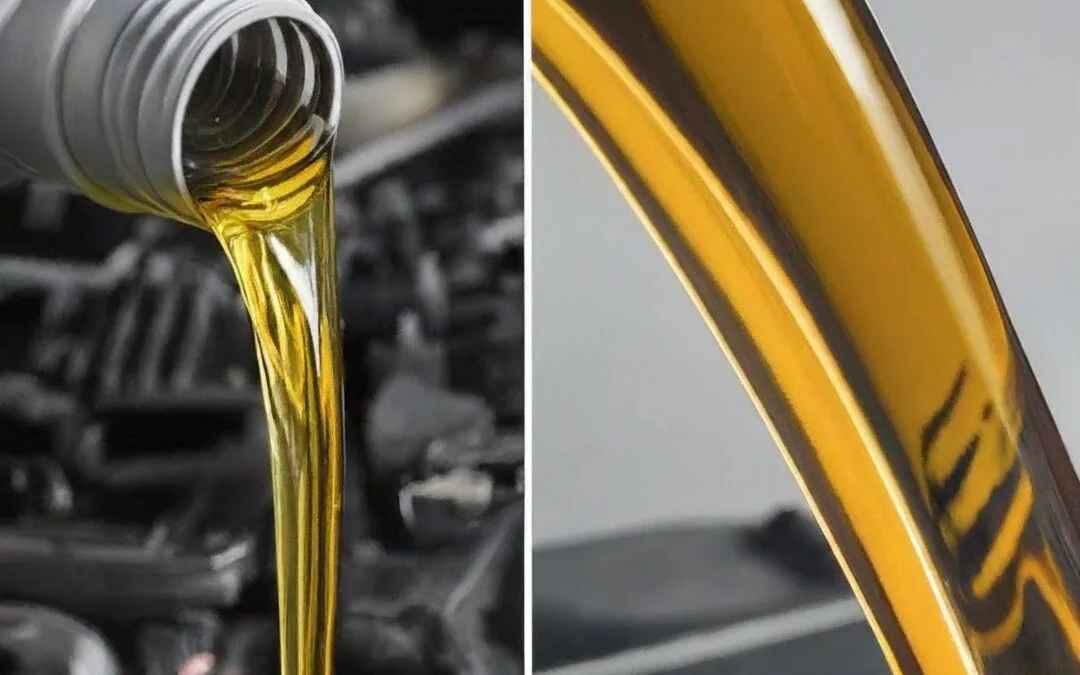Title: Is Motor Oil and Transmission Fluid the same? Debunking the Common Misconception
Introduction:
When it comes to vehicle maintenance, the world under the hood can seem like a complex maze of components, fluids, and functions. Among the many essential fluids, motor oil and transmission fluid are two that often lead to confusion. Some may assume they serve the same purpose and can be used interchangeably, but this couldn’t be further from the truth. In this blog, we will unravel the mystery surrounding motor oil and transmission fluid, exploring their unique functions, characteristics, and why using the right one for the right purpose is crucial for the health and longevity of your vehicle. So, let’s clear the air and understand once and for all: Are motor oil and transmission fluid the same?
Key Differences Between Motor Oil and Transmission Fluid
When it comes to the various fluids coursing through your vehicle’s veins, two of the most critical players are motor oil and transmission fluid. While they both lubricate and help maintain your vehicle’s performance, they serve entirely different functions and cannot be used interchangeably. Understanding the key differences between motor oil and transmission fluid is essential for proper vehicle maintenance and longevity. Here are the primary distinctions:
- Viscosity and Lubrication Properties:
- Motor Oil: Motor oil is designed to have a lower viscosity. This means it flows more easily and is specifically formulated to lubricate the engine’s moving parts, reducing friction and wear.
- Transmission Fluid: Transmission fluid, on the other hand, has a higher viscosity to provide the necessary hydraulic pressure within the transmission. It aids in the smooth shifting of gears and prevents overheating.
- Additives and Detergents:
- Motor Oil: Motor oil contains additives and detergents that are tailored to clean the engine, neutralize acids, and protect against wear. These additives are not suitable for the unique demands of a transmission.
- Transmission Fluid: Transmission fluid is formulated with friction modifiers and anti-foaming agents to optimize its performance in the transmission, ensuring that gears engage smoothly.
- Cooling and Heat Dissipation:
- Motor Oil: Motor oil assists in cooling the engine by dissipating heat generated during combustion. It circulates through the engine to prevent overheating.
- Transmission Fluid: Transmission fluid primarily focuses on providing hydraulic pressure and lubrication. While it does generate some heat, its main role isn’t engine cooling.
- Compatibility with the Respective Systems:
- Motor Oil: Designed exclusively for the engine, motor oil is not compatible with the high-friction environment of the transmission. Using motor oil in the transmission can lead to gear slippage, overheating, and damage to internal components.
- Transmission Fluid: Tailored for the transmission’s hydraulic needs, transmission fluid should never be used as motor oil. It lacks the engine-specific additives needed for proper engine function.
In summary, while motor oil and transmission fluid might seem similar on the surface, they serve entirely distinct purposes and have formulations specific to their roles. Using the right fluid for each system is not only vital for your vehicle’s performance but also for extending its lifespan. The next time you’re under the hood, remember these key differences to keep your engine and transmission running smoothly.
Can Motor Oil Be Used as Transmission Fluid, and Vice Versa?
One of the common misconceptions among vehicle owners is the idea that motor oil and transmission fluid can be used interchangeably. After all, they’re both essential fluids in your vehicle, right? In reality, this assumption couldn’t be further from the truth. Using motor oil as transmission fluid, or vice versa, can have serious and costly consequences for your vehicle. Let’s explore the reasons why these fluids are not interchangeable:
1. Viscosity and Lubrication Properties:
- Motor Oil: Motor oil is formulated with a lower viscosity to flow more easily. It’s designed to lubricate the engine’s components, reducing friction and wear in a high-temperature, high-pressure environment.
- Transmission Fluid: Transmission fluid, in contrast, has a higher viscosity and is tailored to provide the hydraulic pressure necessary for smooth gear shifting in the transmission. It must withstand different temperature and pressure conditions.
2. Different Additives and Detergents:
- Motor Oil: Motor oil contains additives and detergents specific to the engine’s needs, such as cleaning, neutralizing acids, and protecting against engine wear. These additives are not suited for the transmission environment.
- Transmission Fluid: Transmission fluid is carefully formulated with friction modifiers and anti-foaming agents to ensure optimal performance in the transmission. It helps gears engage smoothly and efficiently.
3. Cooling vs. Hydraulic Pressure:
- Motor Oil: Motor oil plays a role in cooling the engine by dissipating heat. It circulates through the engine to prevent overheating.
- Transmission Fluid: While it does generate some heat, transmission fluid’s primary function is to provide hydraulic pressure and lubrication for the transmission, ensuring that gears shift seamlessly.
4. Compatibility:
- Motor oil is designed exclusively for the engine, and transmission fluid is specifically engineered for the transmission. Using motor oil in the transmission can lead to gear slippage, overheating, and damage to internal components.
- Similarly, using transmission fluid in the engine can lead to reduced lubrication, engine damage, and potentially catastrophic consequences.
Changing Motor Oil vs. Changing Transmission Fluid: What You Need to Know
Regular fluid maintenance is a cornerstone of keeping your vehicle running smoothly and efficiently. Two of the most crucial fluids in this regard are motor oil and transmission fluid. However, changing motor oil and changing transmission fluid involve distinct processes and timelines due to their unique roles and requirements. Here’s what you need to know about these essential maintenance tasks:
Changing Motor Oil:
- Frequency: The frequency of changing motor oil largely depends on the type of oil used and your driving habits. Conventional motor oil typically requires more frequent changes, around every 3,000 to 5,000 miles, while synthetic oils can go longer, often between 7,000 to 10,000 miles. Be sure to consult your vehicle’s manual for specific recommendations.
- Process:
- Drain Old Oil: The process begins by draining the old oil from the engine.
- Replace Oil Filter: It’s important to replace the oil filter to ensure optimal filtration of contaminants.
- Add New Oil: Fresh oil is then added to the engine, typically following the manufacturer’s recommendations for oil type and quantity.
- Check Levels: After changing the oil, it’s essential to check the oil level and ensure it’s within the recommended range.
- Importance: Changing motor oil helps reduce friction, remove impurities, and extend the life of your engine. Neglecting this maintenance task can lead to engine damage and decreased fuel efficiency.
Changing Transmission Fluid:
- Frequency: Unlike motor oil, transmission fluid doesn’t need as frequent changes. Most automatic transmissions can go 30,000 to 60,000 miles or even longer between fluid changes. However, it’s crucial to check your vehicle’s manual for specific recommendations.
- Process:
- Inspect Fluid: Start by checking the transmission fluid’s condition. If it’s discolored, contaminated, or has a burnt smell, it’s time for a change.
- Drain Fluid: The old fluid is drained from the transmission pan, which only removes about a third of the total fluid.
- Replace Filter: Replacing the transmission filter is a critical step, as it ensures the new fluid remains clean.
- Refill with New Fluid: The transmission is refilled with the manufacturer-recommended fluid type and quantity.
- Additional Flush (Optional): Some choose to perform a complete fluid exchange, which flushes out nearly all of the old fluid. This is a more involved process and often requires specialized equipment.
- Importance: Changing transmission fluid is vital for maintaining smooth gear shifts, preventing overheating, and prolonging the transmission’s life. Neglecting this maintenance can lead to transmission problems and costly repairs.
Common Myths and Misconceptions About Vehicle Maintenance
Vehicle maintenance is a subject often clouded with myths and misconceptions that, if followed, can lead to expensive repairs and reduced performance. Let’s debunk some of the most common misconceptions that continue to circulate and set the record straight on these important aspects of keeping your vehicle in top shape:
Myth 1: Motor Oil and Transmission Fluid Are Interchangeable
This myth is a recipe for disaster. Motor oil and transmission fluid have distinct compositions and purposes. Using one in place of the other can result in engine or transmission damage, leading to costly repairs.
Myth 2: You Must Change Your Oil Every 3,000 Miles
While this used to be a common practice, modern vehicles and oils have extended oil change intervals. Consult your owner’s manual for specific recommendations; it’s often closer to 5,000 to 10,000 miles, depending on your driving habits and the type of oil used.
Myth 3: Premium Fuel Enhances Performance in All Vehicles
Using premium fuel in a vehicle designed for regular unleaded offers no performance or fuel efficiency benefits. Premium fuel is intended for engines with high compression ratios, and using it in a regular vehicle is a waste of money.
Myth 4: Engine Additives Can Fix Everything
Some additives can help in specific situations, such as fuel system cleaners, but they won’t miraculously repair major engine issues. It’s always better to address problems with proper maintenance and repairs rather than relying solely on additives.
Myth 5: It’s Necessary to Warm Up Your Engine Before Driving
Modern engines are designed to run efficiently shortly after start-up. Excessive idling can waste fuel, increase emissions, and contribute to engine wear. Simply drive gently during the first few miles to allow your engine to reach its optimal operating temperature.
Myth 6: Tires Should Be Inflated to the Maximum PSI Listed on the Sidewall
The maximum PSI listed on the tire is not the ideal pressure for your vehicle. It’s essential to check the manufacturer’s recommended tire pressure, typically found in the owner’s manual or on a sticker inside the driver’s side door frame. Overinflated tires can lead to a harsh ride and reduced traction.
Myth 7: Regular Vehicle Maintenance Is Expensive and Unnecessary
Neglecting regular maintenance might save a few dollars in the short term, but it often results in costly repairs down the road. Proper maintenance extends your vehicle’s life, enhances safety, and maintains performance.
Myth 8: Oil Changes Can Be Done at Any Shop, Regardless of the Quality of the Oil
The quality of the oil and filter used in your oil change matters. Always opt for a reputable shop or dealership that uses high-quality oil and filters to ensure your engine’s longevity
Conclusion:
In conclusion, the belief that motor oil and transmission fluid are one and the same is a common misconception that can have serious consequences for your vehicle. These two essential fluids serve unique functions and have distinct properties, making them unsuitable for interchangeability. Understanding the key differences and using the right fluid for each system is crucial for the longevity and optimal performance of your vehicle. So, remember, when it comes to motor oil and transmission fluid, they may seem similar, but they are far from identical, and using the right fluid in the right place is a fundamental aspect of proper vehicle maintenance
Useful links:
https://shieldoils.com/what-is-the-difference-between-transmission-fluid-and-engine-oil/
FAQs: Is Motor Oil and Transmission Fluid the Same?
Q1: Can I use motor oil in place of transmission fluid, or vice versa?
- No, you should never use motor oil as a substitute for transmission fluid, and vice versa. They have different compositions, viscosities, and additives, and using the wrong fluid can lead to damage in your engine or transmission.
Q2: What happens if I put motor oil in the transmission or vice versa?
- Using motor oil in the transmission can result in gear slippage, overheating, and potential damage to transmission components. Using transmission fluid in the engine can lead to reduced lubrication, engine damage, and even engine failure.
Q3: How often should I change my motor oil?
- The frequency of motor oil changes depends on the type of oil used and your driving habits. Conventional motor oil may require changes every 3,000 to 5,000 miles, while synthetic oils can extend the interval to 7,000 to 10,000 miles. Always refer to your vehicle’s manual for specific recommendations.
Q4: How frequently should I change my transmission fluid?
- Unlike motor oil, transmission fluid changes are less frequent. Most automatic transmissions can go 30,000 to 60,000 miles or more between changes. However, consult your owner’s manual for precise recommendations.
Q5: Are there any exceptions where motor oil and transmission fluid can be used interchangeably?
- There are no exceptions. Motor oil and transmission fluid serve specific functions and are formulated to meet those needs. Using the correct fluid is essential for the proper operation and longevity of your vehicle’s engine and transmission.
Q6: Can I perform an oil change or transmission fluid change at home?
- While it’s possible to perform these maintenance tasks at home, it’s essential to have the necessary knowledge and equipment. If you’re uncertain about the process or need guidance, it’s advisable to consult a qualified mechanic or follow your vehicle’s manual for instructions.
Q7: What are the potential consequences of using the wrong fluid in my vehicle?
- Using the wrong fluid can lead to reduced performance, overheating, damage to engine or transmission components, and, ultimately, costly repairs. It’s best to avoid these consequences by using the correct fluids for your vehicle.
Q8: Can I mix different brands or types of motor oil or transmission fluid?
- Mixing different brands or types of oil or fluid is generally discouraged. It’s best to stick with one consistent type and brand to ensure compatibility and performance. If you must switch, consult a professional or your vehicle’s manual for guidance.





Leave a Reply